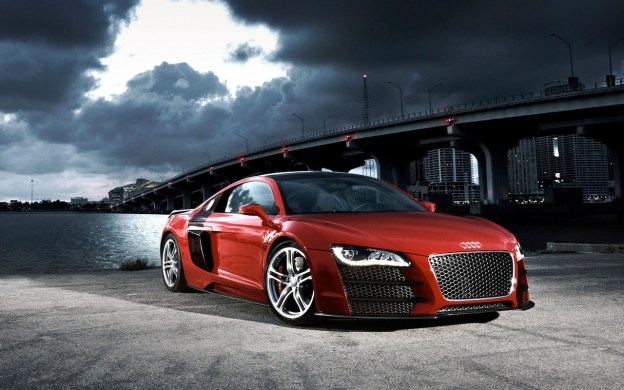
Late last year, we reported on rumors floating around that Audi was considering building a hypercar that would rank above its current supercar, the R8 (pictured).
Tentatively called the R20, Audi’s hypercar would have a hybrid, all-wheel-drive drivetrain and could be released in 2016 to mark the company’s achievement of hitting 1.5-million global vehicle sales, which Audi says it’s on track to accomplish.
Autocar is reporting this week that Audi technical chief, Wolfgang Dürheimer, has acknowledged that such a hypercar is in the production consideration stages.
The all-new Audi hypercar would be inspired by its Le Mans racecar with a plug-in hybrid diesel powertrain. Audi is invested heavily in plug-in hybrid technology.
The drivetrain that would propel the hypercar, according to Dürheimer in an Autocar interview, already exists within the corporation. Adapting existing technology for a new hypercar would bring research and design costs down significantly, making the project even more realistic.
Supercars and hypercars are very important for today’s automakers from a hype and branding standpoint. Audi made a name for itself when it first introduced the R8 supercar in 2006. Audi hopes a hypercar would have the same – if not larger – effect.
An additional benefit to an Audi plug-in hybrid hypercar would be to demonstrate to the global car-buying public that such a drivetrain is proven. If it’s good enough to propel a hypercar over 200 miles per hour, it’s good enough for your family sedan.
Although Audi would only build a few of the hypercars, as the market for such a vehicle is relatively slim, we can’t wait for them to do so. We absolutely love Audi’s offerings and have long been eager to see the German brand take on the likes of Ferrari, with its newly introduced LaFerrari supercar, and the recently unveiled McLaren P1.
Both of those hypercars, it’s worth mentioning, are hybrid-powered.
Dürheimer indicated that production plans for an Audi hypercar could come as soon as this year’s Frankfurt Auto Show. Keep checking back in, as we are sure to learn more as the Frankfurt date draws near.


